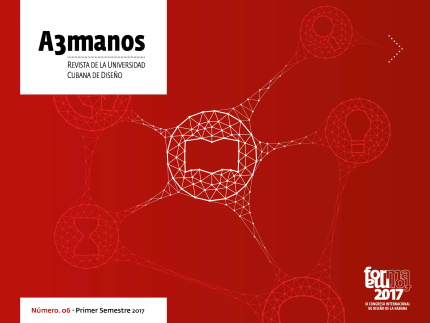How it’s conceptualized in industrial design?
##plugins.themes.bootstrap3.article.main##
Abstract
In the design process that is taught at ISDi, three fundamental stages can be identified: a first one of research, another to generate ideas and a last one to implement design. It has been found that both the first and the last could be carried out by specialists from other related disciplines, while the stage of generation of ideas or "Conceptualization" seems to be an exclusive area of designers, considered also as central core of the entire Design Process.
Contradictorily, in teaching practice the existence of inconsistencies has been evidenced due to different interpretations about creative process of the Design. This paper is based on information obtained in an investigation carried out in the Faculty of Industrial Design of the ISDi, in which this stage was studied. The work will also expose the methodological structure of the Conceptualization (as a stage of the method applied in the ISDi) and the definition of each of its categories. Likewise, the particularities for each Action Area will be identified: Object, Space and Machinery. To this end, the observations made in the academic field will also be compiled, in order to provide greater precision in the description of the stage.
##plugins.themes.bootstrap3.article.details##

This work is licensed under a Creative Commons Attribution-NonCommercial-ShareAlike 4.0 International License.
- Attribution — You must give appropriate credit , provide a link to the license, and indicate if changes were made . You may do so in any reasonable manner, but not in any way that suggests the licensor endorses you or your use.
- NonCommercial — You may not use the material for commercial purposes .
- No additional restrictions — You may not apply legal terms or technological measures that legally restrict others from doing anything the license permits.
- ShareAlike — If you remix, transform, or build upon the material, you must distribute your contribution under the same license as the original. NOTE: This point applies to numbers 1 to 20 of the magazine with the previous CC-BY-NC-SA 4.0 license. Does not apply to the new CC BY-NC 4.0 license from Volume 11, Number. 21 (2024).
References
CABRERA, A. (2000). Acerca del proceso de Diseño: una vi- sión. La Habana: ISDi.
LLOVET, J. (1981). Ideología y metodología del diseño. Bar- celona: Gustavo Gili.
LÖBACH, B. (1981). Diseño industrial. Bases para la configu- ración de los productos industriales. Barcelona: Gustavo Gili.
RODRÍGUEZ, G. (1983). Manual de Diseño Industrial. Mé- xico: Gustavo Gili.
PÉREZ, M. (2013). “La formación de Diseñadores Indus- triales en el ISDi”. En: A 3 manos, No.1 Segundo Se- mestre 2014.
PEÑA, S. Y PÉREZ, M. (2013). “Diseño. Una definición in- tegradora”. En: A 3 manos. La Habana. ISDi. No.1 Se- gundo Semestre 2014.
PEÑA, S. (2000). “Modelo de Gestión de las competencias profesionales del Diseño en Cuba”. Tesis de Maestría. IS- Di, La Habana.
http://es.slideshare.net/AnaListopad/concepto- en-diseno
http://es.slideshare.net/AnaListopad/generacin- de-conceptos-en-diseo
http://es.slideshare.net/luti82/proceso- de- di- seo-8747552
http://blogingenieria.com/general/proceso-dise- no-industrial






















